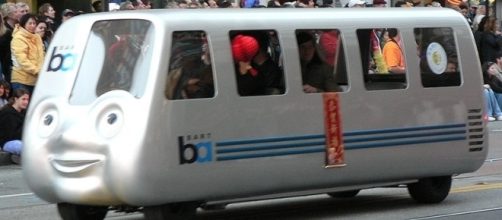Homeless people don't get much respect. Even in a place like San Francisco, which strives to offer a bed to anyone who needs one and serves thousands of free meals to poor folks every day, the homeless are seen more often as a blight.
Take, for example, the recent announcement by BART, the regional transit provider for the San Francisco Bay Area, that homeless people congregating in and around its stations are likely the reason for a recent drop in ridership, according to the San Francisco Chronicle newspaper. Talk about kicking someone when they're down.
Yes, homeless people tend to congregate around BART stations in San Francisco -- yes, the indoor ones along Market Street are mostly warm and dry -- but it's not like they present much more than a reality check for most BART riders headed to secure and at least decent-paying jobs in San Francisco, Oakland, and other locales.
Looking deeper
No, the problems at BART, which carries hundreds of thousands of passengers daily and links dozens of Bay Area communities with San Francisco and Oakland, are deeper than that. BART has obvious management problems -- like hiring a strike negotiator during last year's employee strike -- and forcing passengers to endure numerous delays caused by failing equipment.
It's true that BART has become a kind of lifeline for the homeless, offering safe places to stay out of frequently rainy weather and often dangerous streets, and it's true that many interactions with homeless people do not go smoothly. But disagreements that rise much beyond that are rare They certainly don't occur with enough frequency to blame the economically disadvantaged for making daily commutes intolerable and forcing regular BART riders to abandon the system -- not when there are so many other more likely suspects.
The real problems
What happened to overcrowding on BART trains, which became a major problem as the economy rebounded? What about keeping the paid areas of stations cleaner and adding more seats to waiting areas? What about better real-time communication with riders? These things have nothing at all do do with homeless people, who generally do not enter paid areas of most stations unless they're planning to ride.
But, they have a lot to do with current BART management.
To their credit, BART managers are now offering to better clean the stations and to help homeless people who linger in them find shelter elsewhere. If they actually follow through, and are able to coordinate with social service groups in San Francisco, Oakland and other cities, BART could become a major part of the solution to a societal problem instead of a further irritant.
What's the catch?
There is, of course, a catch. BART officials say they want to begin enforcing a little-known customer conduct ordinance adopted in 2013, which would allow the transit agency to impose fines on violators and even ban repeat offenders from the system.
If that means BART police are going to begin ticketing or arresting violators who beg for change outside stations or take up more than one seat at a time -- people who mostly can't afford to pay such fines -- they are just going to make the problem worse.


